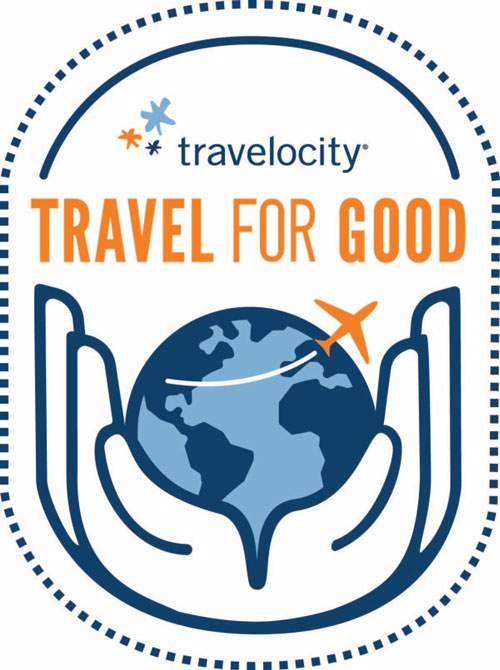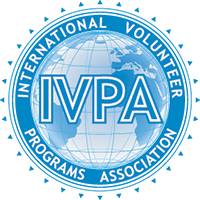Globe Aware volunteers can consult airline policies and stock up on safe snacks before they hit the friendly skies. Get even more great tips to help enjoy international cuisine safely.
A Mom’s Best Advice for Traveling With a Food-Allergic Kid
Consult airline policies and stock up on safe snacks before you hit the road or the friendly skies.
By Hallie Levine
Jun 3, 2024
Health Central
Last December, my two teenage sons, Teddy and Geoffrey, were scheduled to visit Israel with their dad and grandmother. When their trip was cancelled due to the conflict in Gaza, it meant I wouldn't have to worry about my boys traveling into a war zone. It also meant I wouldn't need to worry about Teddy traveling abroad without me, given all his food allergies.
Israeli cuisine is filled with delicacies such as hummus, tahini, bureka (a type of puff pastry) and, of course, bamba, a packaged snack made of peanut butter-flavored puffed maize. But these are all items that are likely to be loaded with sesame and nuts, two foods Teddy is highly allergic to. And unlike in the United States, in Israel, packaged food isn’t required to contain food labels. That meant that there was more of a chance of accidental exposure, or even a reaction from cross-contamination.

Still, being the type-A food allergy mother that I am, I spent months in advance doing my research about traveling abroad with a food allergy. All that information came in handy when Teddy went to Costa Rica with his dad last March over spring break. I’m sharing what I’ve learned, in the hopes that it can help you, too:
Read the airline’s allergy policy. Before I flew with Teddy to London last year, for example, I read the airline’s allergy policy. While most don’t serve products that contain peanuts on their flight, they do often provide food that has other allergens, like tree nuts or sesame. I called the airline in advance, to book an allergen-free meal option for Teddy. I was also pleasantly surprised when we boarded to hear an announcement from the pilot asking that no one eat peanuts on the flight, due to one peanut-allergic passenger (that would be Teddy) on board.
Carry chef cards. These outline the foods that you need to avoid. They are especially handy if you’re going to a foreign country, since you can create them in the language of the country where you’ll be (you can find a template, with many different foreign languages, at the Food Allergy Research and Education website, here. It took me five minutes to create one in Spanish that Teddy could bring with him to Costa Rica. (Just remember, it’s not enough to just carry it around—you have to present it to waitstaff and/or the manager, too!).
Bring safe snacks. Anytime I travel with Teddy, I load up our suitcase and carry on with his favorite grab-and-go snacks: nut free energy bars, pretzels, and even microwave mac and cheese. You never know if you’re going to be stuck somewhere. Traveling is stressful enough—you don’t want to have to worry about what to feed your starving kid in the process. Yes, you can probably buy similar snacks abroad, but don’t assume that they’ll contain the exact same ingredients. They may contain a hidden allergen (or two, or three).
If you do try a packaged snack, make sure you read the ingredients and food label carefully. If it’s available only in a foreign language, you can use the Google Translate app to take a picture and translate.
Bring your EpiPen with you, everywhere. It goes without saying that you should pack a food allergy travel kit which contains any medication you’ll need in case of accidental exposure (usually an antihistamine, and an epinephrine auto injector). But it needs to be with your kid 24/7. It’s easy to forget it if you go on a quick walk (or, in the case of my son, on a long run). Since autoinjectors can get lost, or even stolen, bring duplicates, and also ask your doctor to write extra prescriptions that you can carry with you. You may also want to ask them to write a letter that authorizes you to carry the medication, to prevent hassles at security checkpoints.
If your child or teen, like mine, complains about having to carry allergy meds everywhere in a backpack, there are other, lighter options. We’ve discovered the Epibelt, which can be found here.
Have an emergency plan. If your child does have accidental exposure and goes into anaphylaxis, you’ll end up in the local emergency room. If you’re in a big city, that’s not a huge deal. But if you are in a more remote area, getting immediate assistance may prove more challenging. Make sure you do have a plan in place for these situations. (Usually, the hotel or hotels you are staying at can let you know in advance what your options are.) It’s a good idea to purchase health travel insurance. That way, if you are airlifted from a tropical island to go to the mainland for medical care, you won’t be out tens of thousands of dollars.
Finally, don’t forget to enjoy yourself! Yes, I know it’s stressful. But with the right preparations, the risk of accidental exposure is minimal. Case in point: Teddy’s traveled everywhere from London to California to Canada to Costa Rica, and never had an allergic reaction. Next up: a trip to Greece, including sailing some of the more off-the-beaten-track Greek islands. Am I a little worried? Sure. But an almost 15-year-old boy has to live and enjoy life. So we’ll be flying to Athens later this month with our pre-made chef cards, safe snacks, and EpiPen in tow. Fingers crossed!













